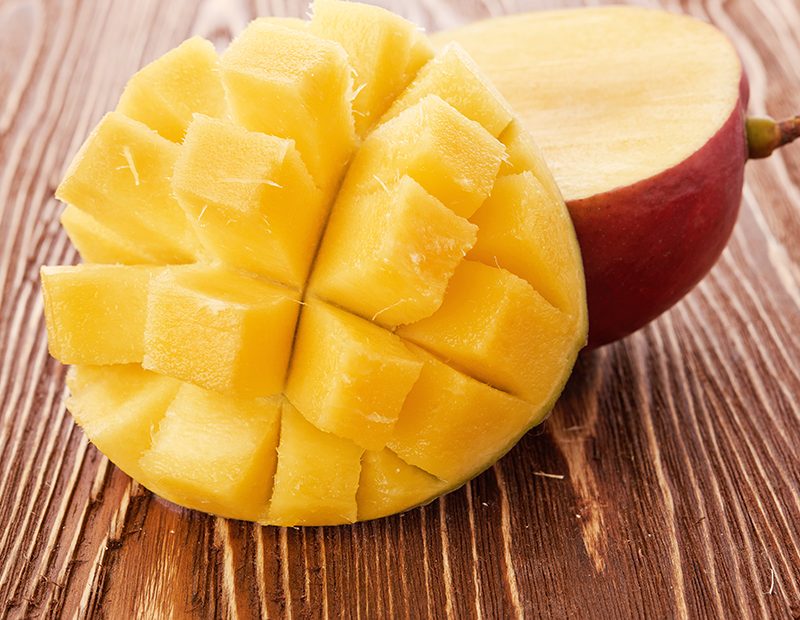National Mango Day: Date, History, Celebration, Facts

Mango is one of the most popular fruits in the world. It is not just a fruit but is a part of culture and history in various countries across the world. In India, Mangos were first grown more than 5000 years ago.
Mango fruit is most of the people’s choice in summers. Mango shake, smoothies, mango cake, mango ice cream, etc. are some of the dishes enjoyed by mango lovers and tops the list of favourite fruit. 22 July is celebrated as National Mango Day or Mango Day.
In Kerala, Kannapuram in Kannur district is being declared an ‘Indigenous Mango Heritage Area’ as per The Hindu. The panchayat is home to over 200 varieties of mangoes. Kannapuram is home to various indigenous mango varieties.
About Mango
The scientific name of Mango is Mangifera Indica and is a member of the cashew family (Anacardiaceae). It is one of the most important and widely cultivated fruits of the tropical world. The tree of mango is considered indigenous to eastern Asia, Myanmar (Burma), and the Assam state of India. As we know that Mangoes are rich sources of vitamins A, C, and D.
Mango fruit can be eaten ripe, it is also used green in pickles and is a fleshy fruit. It is the National fruit of India. There are over 100 varieties of mangoes in India, in different sizes, shapes, and colours. From time immemorial mangoes have been cultivated in India. The poet Kalidasa sang its praises. Even Alexander savoured its taste, as did the Chinese pilgrim Hieun Tsang. Around 100,000 mango trees are planted by the Mughal emperor Akbar in Darbhanga, Bihar at a place known as Lakhi Bagh.
History of National Mango Day
The history and origin of the day are unknown but as discussed above mango itself has a rich history behind it. Mangoes are cultivated over 5000 years ago in India. It is inextricably connected with the folklore and religious ceremonies of India. Buddha himself was presented with a mango grove. Mango by which the fruit is known in English and Spanish-speaking countries likely derived its name from the Malayam manna and when the Portuguese came to Kerala in 1498 for the spice trade adopted it as manga. Due to the difficulty in transporting seeds, the tree was not introduced into the Western Hemisphere until about 1700 and when it was planted in Brazil, it reached West Indies in about 1740. The juicy fruit Mango is cultivated in most frost-free tropical climates.
How did the word ‘mango’ was formed?
The word ‘mango’ is taken from the Malayalam word ‘manna’. When the Portuguese arrived in Kerala in 1498 for the spice trade, they accepted the word manna as manga.
Mango seeds became difficult to transfer during that time. The tree or seed was not introduced or talked about in the Western Hemisphere until around 1700 when it was planted in Brazil. Only around 1740, the seed entered the West Indies; that’s how its recognition grew.
Facts about Mango
Mangoes are the most popular fruit in the world with so many nutritional benefits.
– In India, mangoes were first grown over 5,000 years ago.
– In India, the paisley pattern was developed which is based on the shape of a mango.
– In India, a basket of mango is considered a gesture of friendship.
– Mango in India is a symbol of love.
– As per legends, Buddha meditated under the cool shade of a mango tree.
– Mangoes are related to cashews and pistachios.
– A ripe mango is 14% sugar by weight and 0.5% acid by weight.
– Mangifera Indica means “an Indian plant bearing mangoes”.
– The bark of mango, leaves, skin, flesh, and the pit has been used in folk remedies for centuries.
National Mango Day Celebration
On this day you can buy a bunch of mangoes and try several recipes. Mango has several varieties and you can enjoy it with your friends and family. Each variety has its own unique taste profile and texture. Mangoes can be eaten raw or can be used to make juices, smoothies, cakes, pickles, ice creams, etc. On this day you can also spend time reading about mangoes. You can also post pictures and share them on social media on National Mango Day.
Read More Interesting Story >> Ngnews247.com


